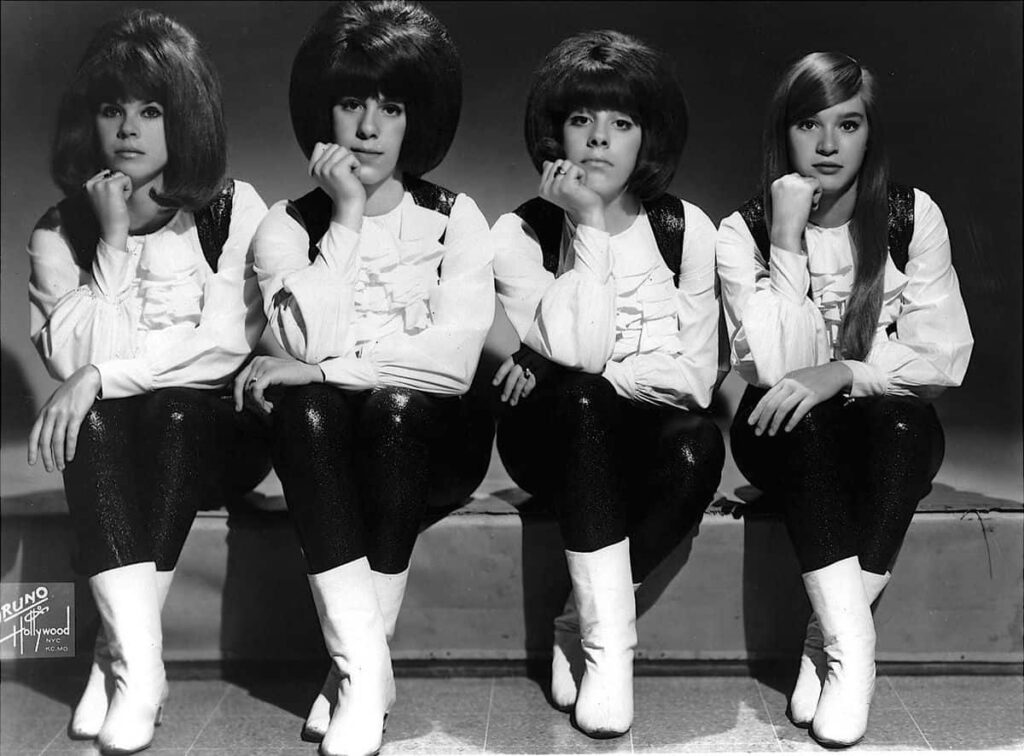
A cautionary tale of teenage rebellion and the tragic consequences of a forbidden romance.
Ah, to be young again. To feel that first, all-consuming love that seems to defy the world, especially the world your parents built. For anyone who came of age in the 1960s, that feeling is forever encapsulated in a two-minute, fifty-second masterpiece of teenage angst and high-octane melodrama: The Shangri-Las‘ “Leader of the Pack.” This isn’t just a song; it’s a cinematic experience, a short film for the ears that etched itself into the hearts and minds of a generation. Released in 1964 as the follow-up to their equally atmospheric hit “Remember (Walking in the Sand),” this record wasn’t just a hit—it was a cultural touchstone. It shot to the top of the charts, reaching number one on the Billboard Hot 100 on November 28, 1964, and solidifying the Queens-based girl group’s reputation as the bad girls of pop, a stark contrast to the polished Supremes or the sweet Shirelles.
The story behind the song is almost as legendary as the song itself. Penned by the formidable Brill Building songwriting team of Jeff Barry and Ellie Greenwich, along with producer George “Shadow” Morton, the song’s creation was a race against time. Morton, a newcomer to the music scene, was tasked with delivering a hit follow-up to “Remember,” but he had nothing. Legend has it that he holed himself up with a bottle of champagne and cigars, and in a burst of frantic inspiration, wrote the outline of this epic tragedy on a shirt cardboard with crayons. The narrative he conjured was pure, unadulterated teenage drama: a girl, Mary, falls for a handsome, leather-clad biker from “the wrong side of town.” Their love is a source of scorn from her well-meaning but hopelessly out-of-touch parents, who force a breakup. The emotional climax, of course, is the fatal motorcycle crash that claims the boy’s life, a scene punctuated by a now-iconic sound effect.
The genius of “Leader of the Pack” lies not just in its compelling narrative but in its groundbreaking production. Morton, a masterful storyteller, didn’t just record a song; he directed a soundscape. The revving of a motorcycle, the screech of tires, the shattering glass—these weren’t just studio effects; they were integral parts of the storytelling, bringing the doomed romance to a visceral, heartbreaking conclusion. The track’s spoken-word sections, delivered with a mix of breathless confession and raw desperation by lead singer Mary Weiss, are what truly sell the drama. You can hear the ache in her voice as she recounts the disapproval of her parents and the final, tearful goodbye. It’s a performance of such authenticity that it’s easy to forget she was a teenager herself at the time, channeling the universal pain of first love and loss with a maturity far beyond her years.
For many, “Leader of the Pack” was more than just a pop song. It was a mirror reflecting the anxieties and rebellions of a generation grappling with a changing world. It tapped into the burgeoning youth culture’s fascination with danger, speed, and forbidden love—a theme popularized by cinematic heroes like James Dean and Marlon Brando. The “death disc” genre it helped define, with its tales of tragic accidents and lost lovers, resonated deeply with teenagers who saw their own feelings of alienation and defiance in these grand, operatic narratives. The song’s legacy stretches far beyond its initial chart success, influencing artists from the New York Dolls to Twisted Sister, who would cover it in 1985. It’s a song that proves that even in the seemingly innocent era of the girl group, there was a dark, defiant heart beating just beneath the surface. To hear it now is to be transported back to a time of innocence and recklessness, to a moment when a three-minute song could feel like the end of the world.